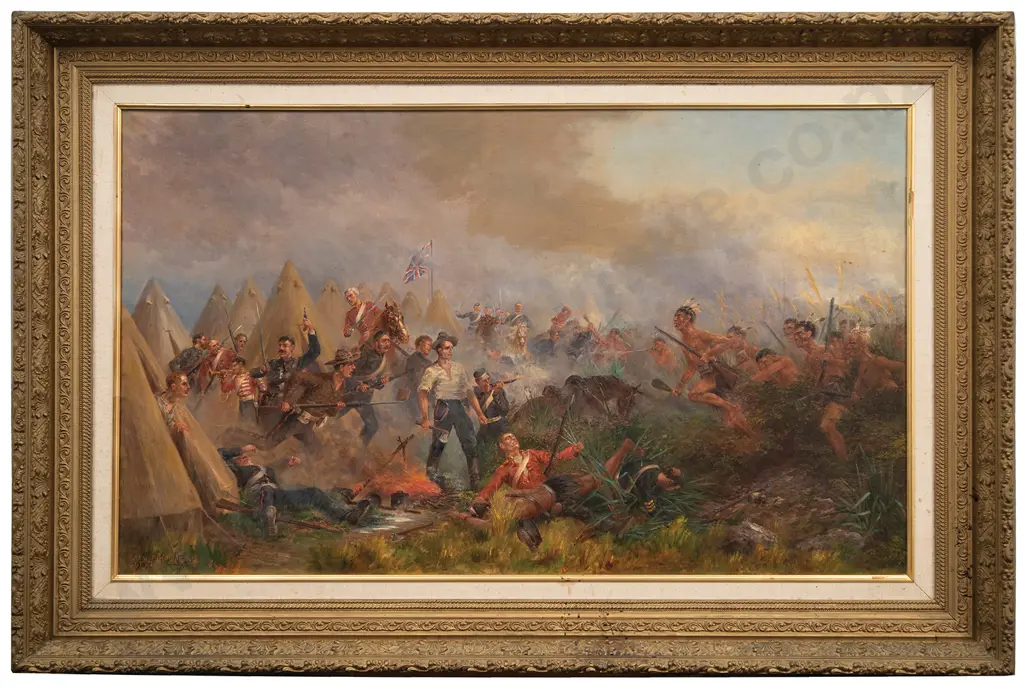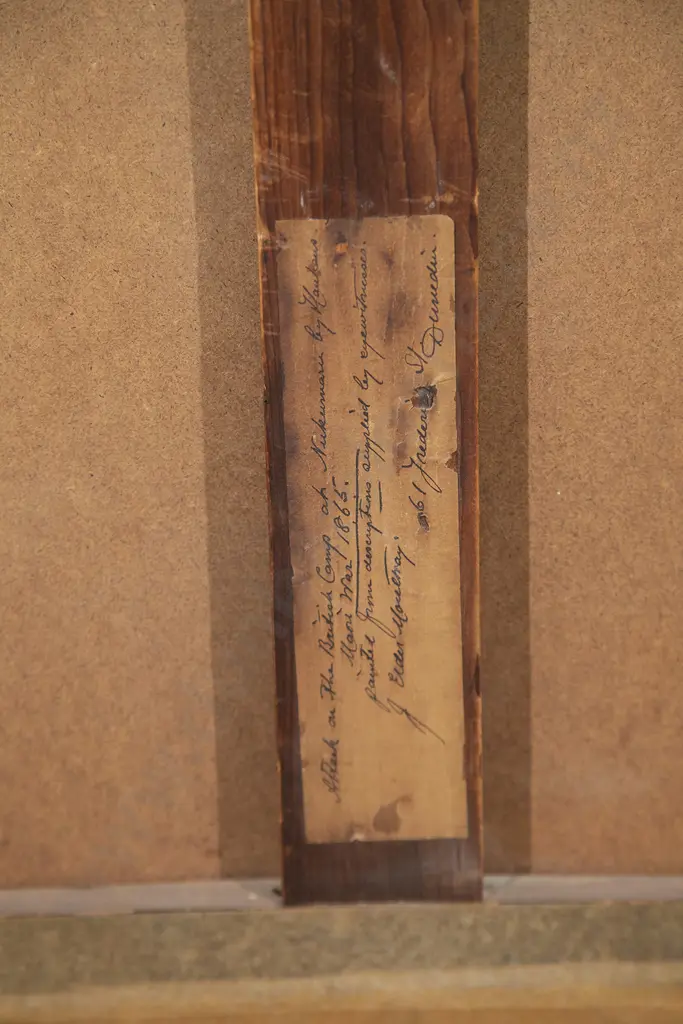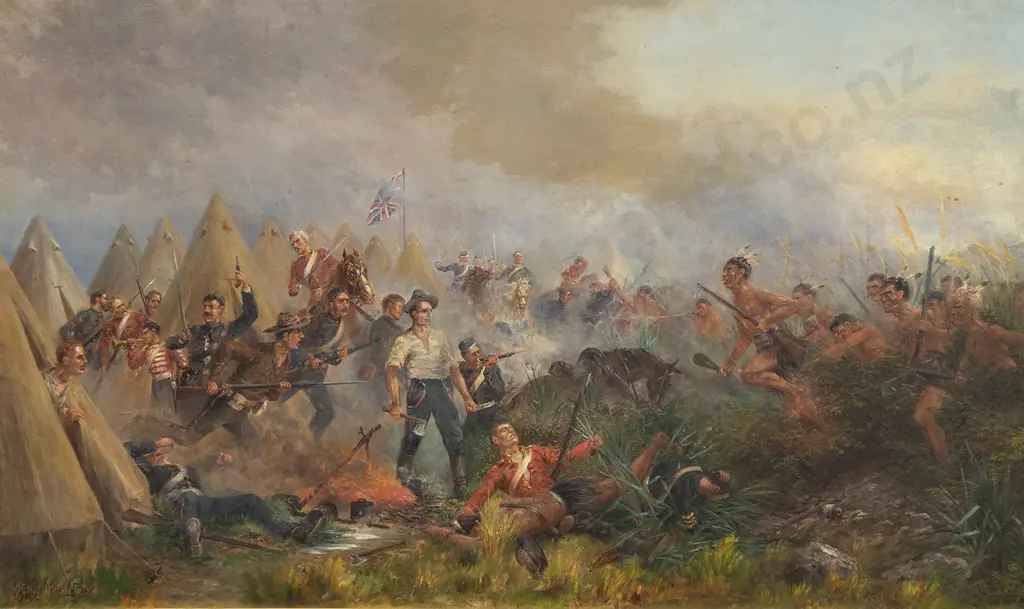NZ & International Fine Art - Evening Sale Wednesday, 24 November 2021 / 6:00 pm start
John Elder Moultray (1865-1922) - Attack on the British Camp at Nukumaru by Hautiaus-Maori War
Lot Details
John Elder Moultray (1865-1922) Attack on the British Camp at Nukumaru by Hautiaus-Maori War, 1865 oil on canvas laid down on board signed and dated 'J Elder Moultray 1907' (lower left) 75.5 x 126 cm Provenance Sale, Leonard Joel, Australian Paintings, Melbourne, 07 November 1984 (lot 190) Private collection, Wellington The battle of Nukumaru was fought during Lieutenant-General Duncan Cameron’s west coast campaign of early 1865. Governor George Grey instructed Cameron to first occupy Crown land at Waitōtara, then engage with hostile Māori further north. By late January, a large British force was camped at Alexander’s Farm near Kai Iwi, 15 km north-west of Whanganui. On the morning of 24 January, 1000 troops marched north along the coast towards the Waitōtara River. The force comprised men of the Royal Artillery and Royal Engineers, the 18th and 50th Regiments, and cavalry. Although Cameron was in attendance, the force was under the operational command of Major-General Richard Waddy. Late that afternoon the British force made camp near Lake Paetaia. The site, about 15 km north-west of Kai Iwi and 3 km south-east of present-day Waitōtara, was close to the Māori settlement of Nukumaru, which appeared to be abandoned. Waddy set up defensive posts around the camp. While moving to their allotted position, 80 men of the 18th Regiment under Captain Hugh Shaw were fired on from Nukumaru. As the British advanced, the Māori fell back to an established defensive position. Shaw ordered a withdrawal, but returned close to Māori lines with a small party to recover a wounded man. Exchanges of gunfire continued late into the night. Four troops were killed in action or died of wounds received during these skirmishes. The dead included Lance-Corporal Patrick Conlin (or Caulin) and Private Patrick Connelly (or Connolly), both of the 2nd Battalion, 18th Foot Regiment. Lieutenant Thomas Johnson (or Johnstone) of the 40th Regiment was one of those who fell ‘mortally wounded’. For his actions, Shaw was awarded the last of the 14 Victoria Crosses won by imperial servicemen during the New Zealand Wars. The next day – 25 January – up to 600 Māori crept towards the British position under cover of flax and fern. At 2 p.m. they charged. Two outlying British defensive positions were overrun, with many men killed by pātītī (tomahawk). British cavalry and infantry entered the fray, with hand-to-hand fighting north and west of the camp. The attackers were finally driven off by rounds from two 6-pounder Armstrong guns. Thirteen British troops were killed and 32 wounded that day. The British found 10 Māori dead after the engagement, but a later account by a Māori veteran of the battle suggested that 23 Māori were killed. Almost all the bodies recovered – British and Māori – were buried on the battlefield. The British force reached the Waingongoro River – nearly 100 km north-west of Whanganui – on 31 March. It advanced no further and, despite having engaged the enemy at Nukumaru and Te Ngaio (13 March), it was regarded by many in political and military circles as a failure. This was Cameron’s last campaign in New Zealand; he left the colony in August.
 Moultraylot36.pdf (92 kb)
Moultraylot36.pdf (92 kb)




